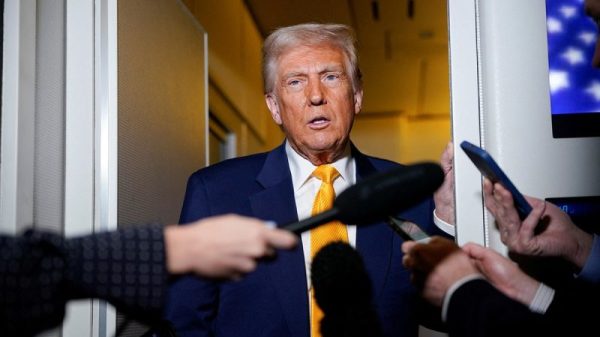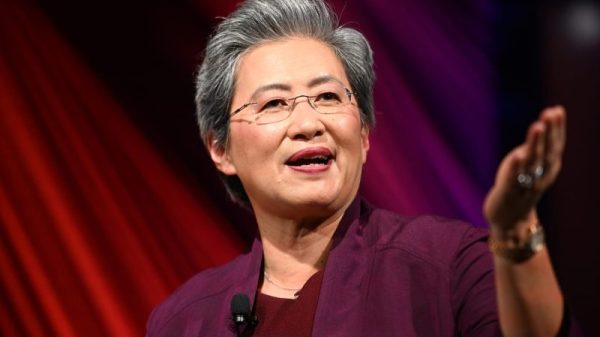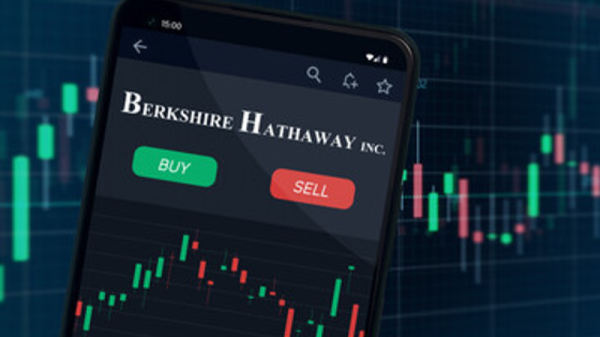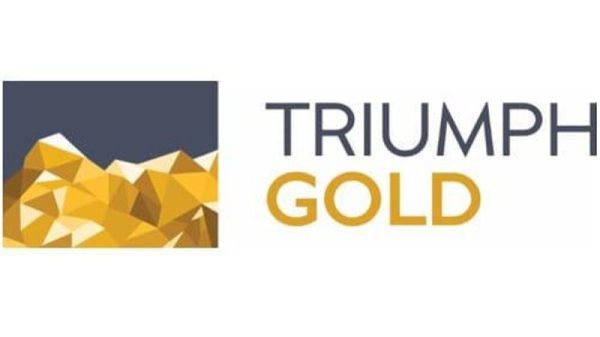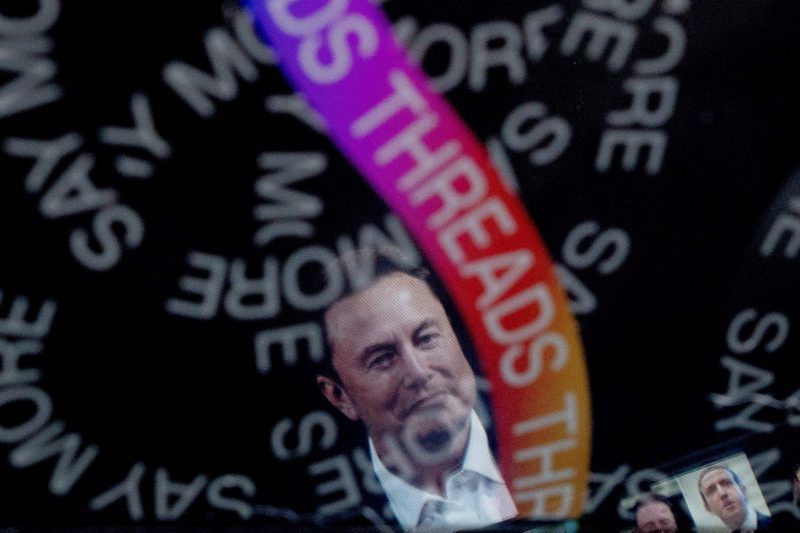I got a push alert on my phone Thursday afternoon from Truth Social, the social media platform founded at the behest of former president Donald Trump. Usually, these alerts are meant to inform Truth Social users about some victory in the war against the left (or perhaps in the battle against the insufficiently right).
This one was about social media itself: “LATEST: Twitter threatens legal action over Meta’s Threads app.” That was followed by the goggling-eyes emoji, which is a common accent point for such alerts.
To the uninitiated, this update might have seemed like Trump’s platform hyping a feud between two of Truth Social’s competitors (in the sense that the cola offered at a Brooklyn vegan restaurant is a competitor to Coke and Pepsi). But most Truth Social posts are about politics, and so was this one — as surely as was a prior one noting that Threads “attempts to warn users from following Donald Trump Jr.,” which was preceded by a siren emoji.
What’s interesting isn’t that Twitter is feuding with Threads with Truth Social looking on. It’s that the Twitter worldview is now in conflict with the Threads worldview. It’s that the splintering that created two universes in the traditional media has spilled over into the social media world, too.
A long time ago, before an increasingly large percentage of Americans was born, there were only a few sources of information: broadcast news stations and local newspapers. These were imperfect, but they had the advantage of limiting the spread of obviously false information from either motivated actors or misinformed ones.
That era was first eroded by the advent of cable television, which provided space for more viewpoints, and then by the internet. This was useful for increasing the spread of information since newspapers have only so many pages and network news has only so many minutes. The web is near-infinite and cable news networks need to fill 24 hours. But a lot of that information was junk of the sort that would be excluded from newspapers and Walter Cronkite’s show for good reason. A lot of it was also just spin.
Conservatives had long argued that the media was biased in favor of the left. There were certainly isolated examples that bolstered that viewpoint, but elevating these allegations was also seen as a good way to get the media to self-police, to overweight conservative viewpoints at the outset. The web — particularly when combined with the distribution power of social media — made this less necessary. Why worry about what The Washington Post is writing when you can simply have a friendly website present your argument?
You know what happened next. A media multiverse emerged, anchored on one end by a robust, energized right-wing media ecosystem and on the other by traditional media outlets still committed to self-correction and accurate presentation of information. (There’s a left-wing universe, too, but nonconservatives tend to place more confidence in — and grant more readership/viewership to — traditional outlets.) Those who viewed the mainstream media as dishonest for not framing things favorably to the right got a whole galaxy of places in which to find more palatable offerings. The new struggle was to see how far they’d go: Were Jeb Bush and Fox News far enough, or did we need to go to Donald Trump and Breitbart?
Now consider what happened with social media. By 2015 or so, there were two primary sharing platforms: Facebook and Twitter. Each had grown huge (albeit Twitter less so) by focusing on expanding their audiences however possible. It quickly became apparent (as was by then understood by fringe websites) that extreme claims and misinformation were powerful drivers of engagement. The 2016 election brought things to a head; the combination of Russia’s (largely toothless) efforts to influence public opinion using social media, an avalanche of (often politically focused) scam sites and rampant (often politically driven) abuse spurred the platforms to implement new guidelines and guardrails.
They didn’t want to become news organizations, by any stretch. But they also didn’t want to be willing conduits of false information, spooking advertisers. So they stumbled their way toward a position similar to that held by traditional news outlets, developing systems to evaluate and check what they were presenting.
It soon became apparent that these efforts would be hopelessly entangled with partisan politics. The Trump era of right-wing rhetoric allowed for an enormous volume of falsehood. Facebook struggled to figure out how to tamp down on false claims without appearing to disproportionately target right-wing websites. That unabashed conspiracy theorists like Alex Jones were embraced by the political right in the Trump era made any such delineation far harder. The right intentionally made it harder, too. Like many Republicans before him, Trump criticized social media efforts in part because he hoped to spur them to overweight the conservative viewpoint at the outset.
Then came 2020, in which two particular strains of misinformation posed an enormous challenge to social media companies: covid-19 responses and allegations of election fraud. Each was intertwined with partisan politics, and, in each case, there was a broadly mainstream position and a right-wing one. Twitter and Facebook implemented checks to limit the sharing of false or unverified information about the pandemic and, particularly after the 2020 election, to halt the spread of false claims about election fraud. Accounts that repeatedly spread misinformation were banned — including (after the Capitol riot) Trump’s.
A number of right-wing competitors to Twitter (in particular) emerged in the Trump era, including Parler, Gettr and Gab. While the triggers weren’t always the same, the idea was: Facebook and Twitter were muffling right-wing speech and these would be platforms where it could thrive. This argument that misinformation or abuse constituted “free speech” wasn’t wrong in a constitutional sense, but assertions that the platforms were obligated to necessarily host any such speech were wrong in a legal one. It was mostly just a sales pitch — Come to Gab, where you can say anything you want! — but it guided how the platforms operated.
Particularly once Trump helped launch Truth Social, the social media landscape looked a lot like the media one a decade ago: the “traditional” platforms that had systems meant to limit misinformation and the right-wing ones that were unencumbered by such constraints.
Here, the stories divide. There was this guy named Elon Musk, you see, who shared both Trump’s personality and his dislike for the way in which Twitter tried to moderate its content. Unlike Trump, though, he was enormously wealthy and not banned from Twitter, so, instead of making his own thing, he decided to try to take over Twitter. (As Trump learned when running for president in 2016, seeking power through established institutions is easier than doing it from the outside.) Musk made a wildly overvalued bid for Twitter and Twitter, understandably, accepted.
Since assuming control of the platform, Musk has upended the way it used to work. He inverted the site’s verification system, a tool once designed to ensure that information was trustworthy and now, if anything, suggests that it isn’t. He reinstated enormous numbers of users who had been banned for abuse or for spreading misinformation. He reoriented the site around his own right-wing worldview as much as possible. And he did so under the mantra of “free speech,” shrugging at the occasions in which his own actions betrayed that ideal.
It was as though Andrew Breitbart had decided not to start a website but, instead, to purchase the New York Times. And the effect was that a lot of longtime Twitter users were suddenly in the market for a product that wasn’t what Musk was offering — and wasn’t run by Musk.
So Meta (Facebook’s parent company) rolled out Threads, an as-yet less-functional version of Twitter. Users verified on Instagram, including many in the media, were verified on Threads, too, so you already knew who you were dealing with. And Meta also cautioned users against following people who in the past had been flagged as purveyors of misinformation, including Donald Trump Jr.
This is oversimplified, certainly. Musk wasn’t just taking a position in the polarized fight over sharing misinformation but also upending a social platform popular with journalists he loathes. His fight with Meta is about the very real threat to Twitter that Threads poses — though this reinforces his interest in making it a partisan fight as well.
What’s odd about the Twitter-Threads fight, though, is that the right theoretically got what it wanted from Twitter. It has an owner who is amenable to their arguments and who refuses to curtail misinformation. Quite the opposite. So why do they want to go on Threads in the first place? It’s as though Sean Hannity was mad that NBC wasn’t letting him have a segment on the “Today” show. Just say your thing on Fox News!
The difference is that, for many of these users, the fight is the point. Musk said it himself in a tweet disparaging Meta: “It is infinitely preferable to be attacked by strangers on Twitter, than indulge in the false happiness of hide-the-pain Instagram.” It’s an intensely weird thing to say, particularly as the proprietor of a social media platform that is ostensibly centered on encouraging use. Actually, Musk insists, having a bad time is good.
But this is what he wants from social media. It is what Trump wants and what many others on the right want. The appeal of Twitter in general was that it allowed everyone the chance to interact with famous people. The appeal for many on the right was that it also offered the opportunity for them to lash out at those strangers (and less famous ones). If they all leave, what’s the point? Maybe Musk thinks it’s preferable to be attacked by strangers, but I suspect, say, Katie Couric doesn’t.
Social media has now splintered in the same way the traditional media did, with unclear long-term effects. It means that while Truth Social and Twitter are competitors, it’s largely only in the same way that Breitbart and One America News are. There is one central difference, though: The right’s use of social media is not only about presenting competing information in the political war but in using the platforms themselves as battlefields.
And why? Because being banned for abuse or being called out for misinformation happens publicly — allowing it to be reframed as left-wing censorship efforts and, therefore, small victories in their own right. It’s the recent pattern of right-wing political actors publishing emails from journalists as though something nefarious is afoot, but at scale.
It seems that the inevitable point of stasis is the one that existed in mid-2020: two large social media platforms that meet the needs of apolitical, non-right-wing users that are constantly used as foils for a right-wing audience. In much the same way that outlets like The Washington Post have been foils for the right for decades.



